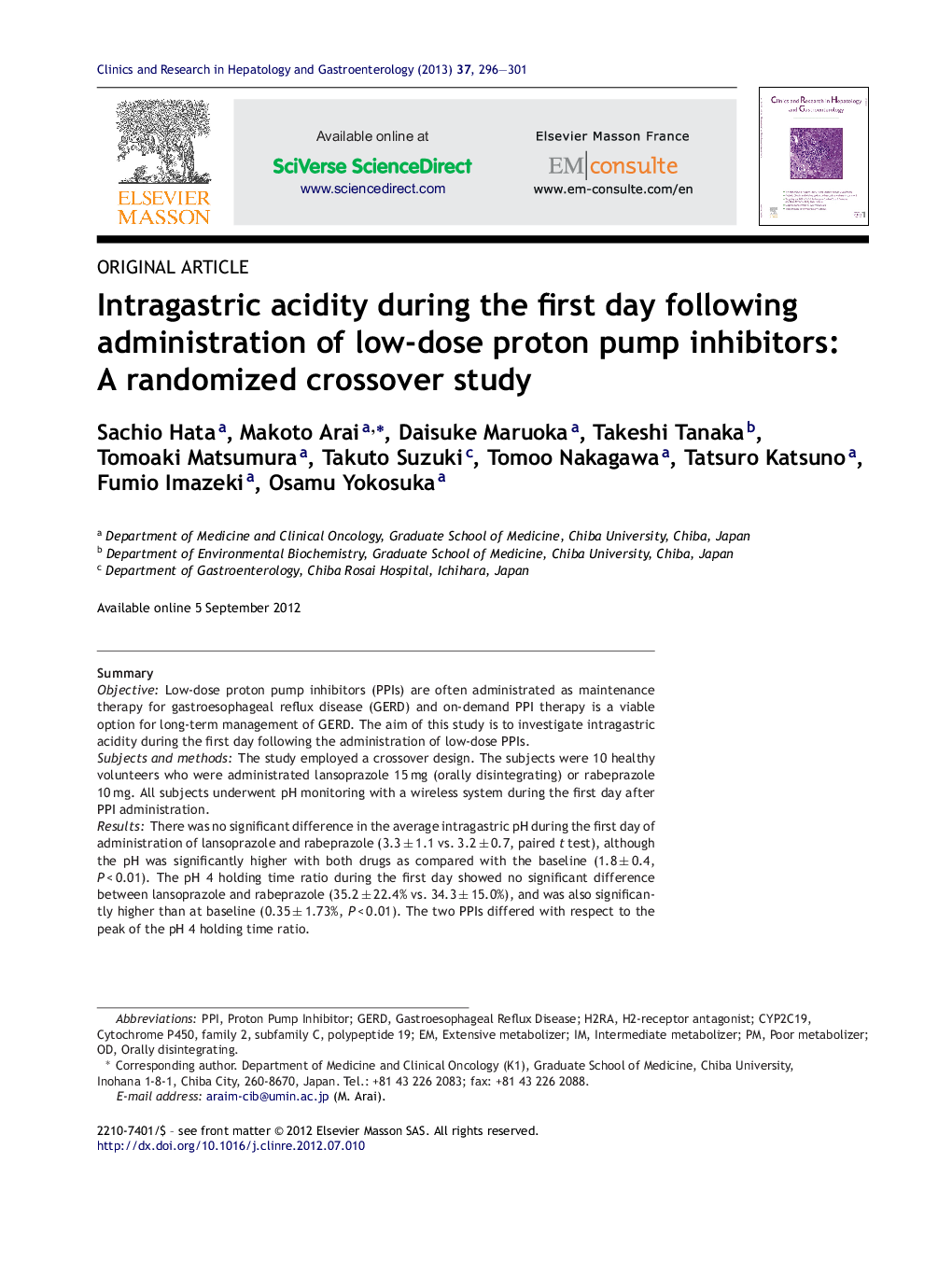| Article ID | Journal | Published Year | Pages | File Type |
|---|---|---|---|---|
| 3286275 | Clinics and Research in Hepatology and Gastroenterology | 2013 | 6 Pages |
SummaryObjectiveLow-dose proton pump inhibitors (PPIs) are often administrated as maintenance therapy for gastroesophageal reflux disease (GERD) and on-demand PPI therapy is a viable option for long-term management of GERD. The aim of this study is to investigate intragastric acidity during the first day following the administration of low-dose PPIs.Subjects and methodsThe study employed a crossover design. The subjects were 10 healthy volunteers who were administrated lansoprazole 15 mg (orally disintegrating) or rabeprazole 10 mg. All subjects underwent pH monitoring with a wireless system during the first day after PPI administration.ResultsThere was no significant difference in the average intragastric pH during the first day of administration of lansoprazole and rabeprazole (3.3 ± 1.1 vs. 3.2 ± 0.7, paired t test), although the pH was significantly higher with both drugs as compared with the baseline (1.8 ± 0.4, P < 0.01). The pH 4 holding time ratio during the first day showed no significant difference between lansoprazole and rabeprazole (35.2 ± 22.4% vs. 34.3 ± 15.0%), and was also significantly higher than at baseline (0.35 ± 1.73%, P < 0.01). The two PPIs differed with respect to the peak of the pH 4 holding time ratio.ConclusionsLansoprazole 15 mg and rabeprazole 10 mg showed sufficient inhibition of intragastric acidity during the first day after PPI administration and the effects did not differ between drugs, although there was a difference in their time at which the peak effects were reached.
